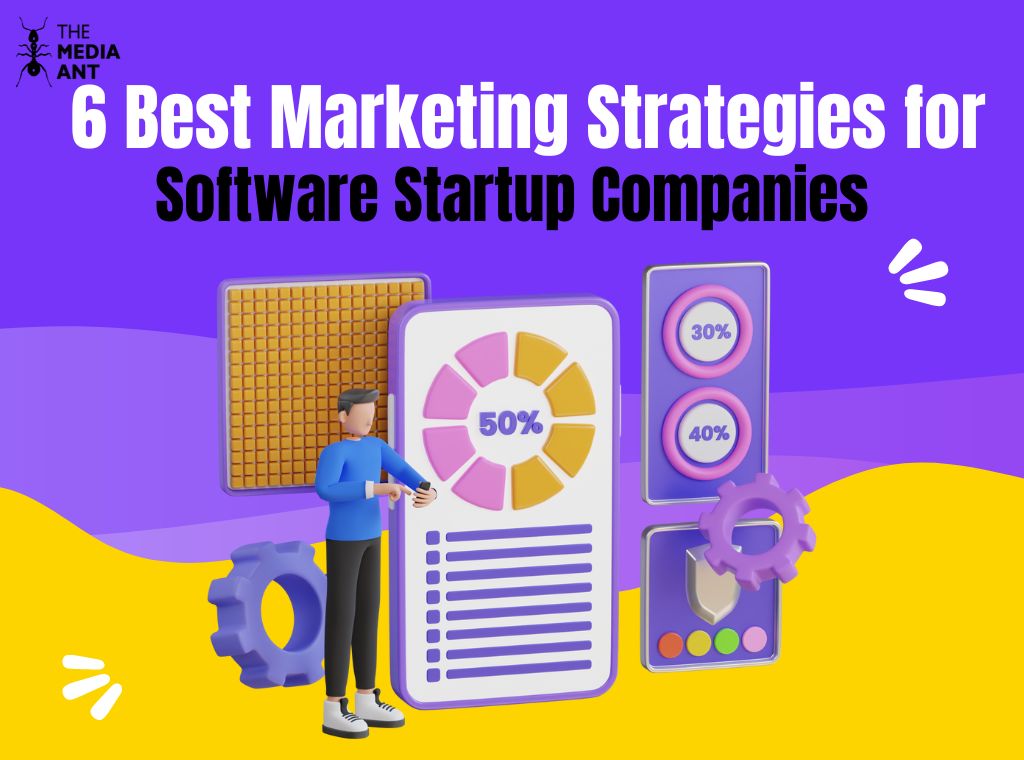With the increasing populace of technology companies, new software developing startups particularly experiences intense market competition. As such, the need to appreciate, the need to employ proper marketing strategies cannot be overemphasized. This puts pressure on startups to find a way to stand out from the clutter, using novel concepts that are appealing to the target customer base, with the help of available, cutting-edge tools and platforms.
This introduction delineates key strategic initiatives for marketing in software startup companies including leveraging data analysis for targeting potential customers and creating engaging content marketing strategies. Thus, by focusing on messages such as unique sale propositions and learning for change, software startup companies can not only endure the scenarios and challenges they may face but can also leverage the odds to create opportunities for success.
1. Identify Your Niche and Understand Your Audience
Market niche refers to a specific, targeted area of a given market that is occupied by a certain type of service or product. For software startup companies, the process of narrowing down the area of focus means finding a niche, which involves defining a specific sector in your market that your software product targets and addresses a specific need far better than any other products in the market. This means that as a company or software developer, you need to have a good understanding of the current solutions and the open void that your software could fill.
- Market Research:
Thus, it is incumbent upon a firm to conduct exhaustive market research to analyze various segments of the market. Consider analyzing the customers’ feedback concerning specific products, the market’s tendencies that might be interesting for a business and the opportunities that have not been explored yet.
- Competitor Analysis:
While analyzing your competitior and understanding what they are doing and where they might be missing opportunities will help with this. This is because competitor analysis will assist you in identifying an avenue in the market where your product can be unique.
- Unique Value Proposition (UVP):
State features that articulate your product from the rest. Regardless, the best UVP states why a consumer should buy from you instead of the competition – whether it’s a quality a product or service has that competitors don’t, its performance, its cost-efficiency or customer care.
When you ascertain the specifics of the particular market you have targeted to specialize in, the next thing is to understand the market adequately as you focus on the sector. It goes beyond the identification of who or what your audience is. It entails appreciating all the actions that a client takes, their inclination, suffering, and the process they have to follow when making decisions.
Components to Understand Your Audience:
- Demographic Information:
Gather data like age, gender, profession, and geographical location. This basic information helps in forming a general understanding of who your audience is.
- Psychographics:
Go beyond demographics to explore your audience’s lifestyles, values, interests, and attitudes. This information can guide how you communicate with them and motivate them to use your product.
- Customer Pain Points:
Identify the specific problems or challenges your audience faces that your software can solve. Understanding these pain points is critical for tailoring your product’s features and marketing messages.
- Buyer Personas:
Create detailed profiles for different segments of your market. These personas should reflect your customers’ motivations, behaviors, decision-making processes, and preferred communication channels.
2. Leverage Content Marketing

However, before starting to create content, it is helpful to clearly define your goals when it comes to content marketing. Some objectives of software startup companies could be to familiarize the brand, acquire leads, inform the customer and cultivate the leads. When establishing goals and objectives in your business, it is very effective in developing more strategic content that is right for it.
The most effective content marketing strategies are the ones done with the audience in mind. For software startup companies, this means understanding who your potential customers are, what their problems are, and what kind of knowledge they want. Developing complex profiles of target consumers will enable the creation of content that satisfactorily addresses the needs of the select group.
In its simplest form, content marketing is the process of designing content that is relevant to your target market.
- How-to Guides and Tutorials:
Consider what kind of content will teach your audience something new: how to solve certain problems, how to get the most out of your software.
- Blog Posts and Articles:
The industry trends should be addressed, valuable information should be provided, and key points concerning the chosen focus area should be viewed.
- Videos:
Create tutorials, recorded presentations, or recorded interviews with satisfied customers that illustrate how your software functions and why it will be useful.
- Webinars and Live Demos:
These can be useful when you need to address your audience, share important data with them, and respond to their questions immediately.
Traditionally, the content has been created with a specific audience in mind, and the most effective way to enable this content to get to the targeted consumers is to make sure that the content has been search-engine optimized. This involves searching for the right keywords, writing meta tags and strong title tags that enhance the customer’s content ranking in SERPs.
So you created the content – good for you, but are you still done with this task? No, you also have to promote it. The final step involves making the content accessible to the audience through various channels that the audience frequents. This can include:
- Social Media Platforms:
Where to disseminate among B2B target audiences use Social media Platforms like LinkedIn or where to spread the word to the general public use Twitter(X) and Facebook.
- Email Newsletters:
Send out blog updates to the list consistently with latest articles, or new white papers or case studies.
- Content Syndication:
Share your posts on other sites or partner up with other brands or key opinion leaders of your business niche.
Also, it is crucial to stress that metrics should be constantly measured and the content marketing strategy should be adjusted all the time to maximize its efficiency. Employ web and social media analytics to monitor reaction rates, unique views, time spent on a specific story, and followers and conversions. Obviously, these tips will allow us to comprehend which kinds of posts are promising in a given niche, as well as which points one should focus on.
3. Adopt a Multi-Channel Approach

Adopting a multi-channel approach in marketing involves leveraging a diverse array of platforms to reach your target audience effectively. By not relying solely on one channel, you can:
- Enhance Visibility:
Using multiple channels increases your brand’s exposure across different audiences and touchpoints.
- Mitigate Risks:
Spreading efforts across various platforms reduces dependency on a single source for leads and sales.
- Optimize Engagement:
Different channels cater to varied audience preferences, allowing for tailored messaging and interactions.
- Gather Insights:
Analyzing performance across channels provides valuable data to refine strategies and improve ROI.
4. Offer Free Trials or Demos
Offering free trials or demos is a strategic approach to attract potential customers by letting them experience a product without financial commitment. This tactic reduces the perceived risk and allows users to assess the software’s value firsthand. During the trial, customers can explore features, understand the interface, and determine the software’s relevance to their needs.
To optimize conversions from trials to paid subscriptions, it’s crucial to ensure the trial period is sufficient to demonstrate the product’s benefits fully. Following up with personalized support during this phase can further enhance engagement and increase the likelihood of purchase.
5. Focus on Customer Support and Experience

Focusing on customer support and user experience is crucial for software startup companies aiming to differentiate themselves in a competitive market. Here are key points that underline the importance of these elements:
- Customer support acts as the immediate interface between your company and its users.
- Effective support can solve problems, improve brand perception, and increase loyalty.
- Offer support across multiple channels including email, phone, live chat, and social media to accommodate different user preferences.
- Implement CRM systems to maintain personalized and consistent communication.
- Fast response times are critical, customers expect “immediate” responses to their queries.
- According to HubSpot, 90% of customers consider immediate responses important when they have a customer service question.
- The user experience encompasses the user interface design, ease of navigation, and the overall interaction with the software.
- An intuitive and user-friendly design can significantly enhance customer satisfaction and retention.
- Investing in a well-designed user interface can reduce the frequency of support queries by making the software easier to use.
- Improved user experience leads to higher engagement and potentially increases sales and customer loyalty.
- Customer support should not only fix issues but also enhance the overall user experience, turning users into brand advocates.
- Support efforts should be proactive, anticipating user needs and addressing them before they become frustrations.
- By focusing on providing excellent customer support and a smooth user experience, startups can secure a strong market position.
These investments help build a reputable brand image that attracts and retains customers, fostering long-term success.
6. Analyze and Adapt
The term “Analyze and Adapt” encapsulates a dynamic and responsive approach essential for software startup companies in a competitive market. Here’s how it can be broken down into actionable steps:
- Utilize platforms like Google Analytics, Mixpanel, or Amplitude to gather data on user behavior, engagement, conversion rates, and more.
- Define measurable goals (e.g. increase website traffic by 20%, improve conversion rates by 10%) and identify key performance indicators that align with these goals.
- Continuously track and review the performance of all marketing activities.
- Analyze trends over time and compare them with industry benchmarks to gauge success.
- Use A/B testing to experiment with different versions of web pages, email campaigns, or ads to determine which elements perform best.
- Quickly make adjustments to marketing strategies based on analytical insights and testing results.
- Revise or pivot strategies based on underperforming outcomes or new opportunities.
- Regularly solicit and integrate customer feedback to refine product offerings and marketing messages.
- Use the insights gained from ongoing analysis to make informed decisions.
- Adapt marketing strategies to respond to changing market conditions, consumer preferences, and technological advancements.
- Focus on optimizing the strategies that yield the best ROI and reconsider or stop those that do not meet performance benchmarks.





